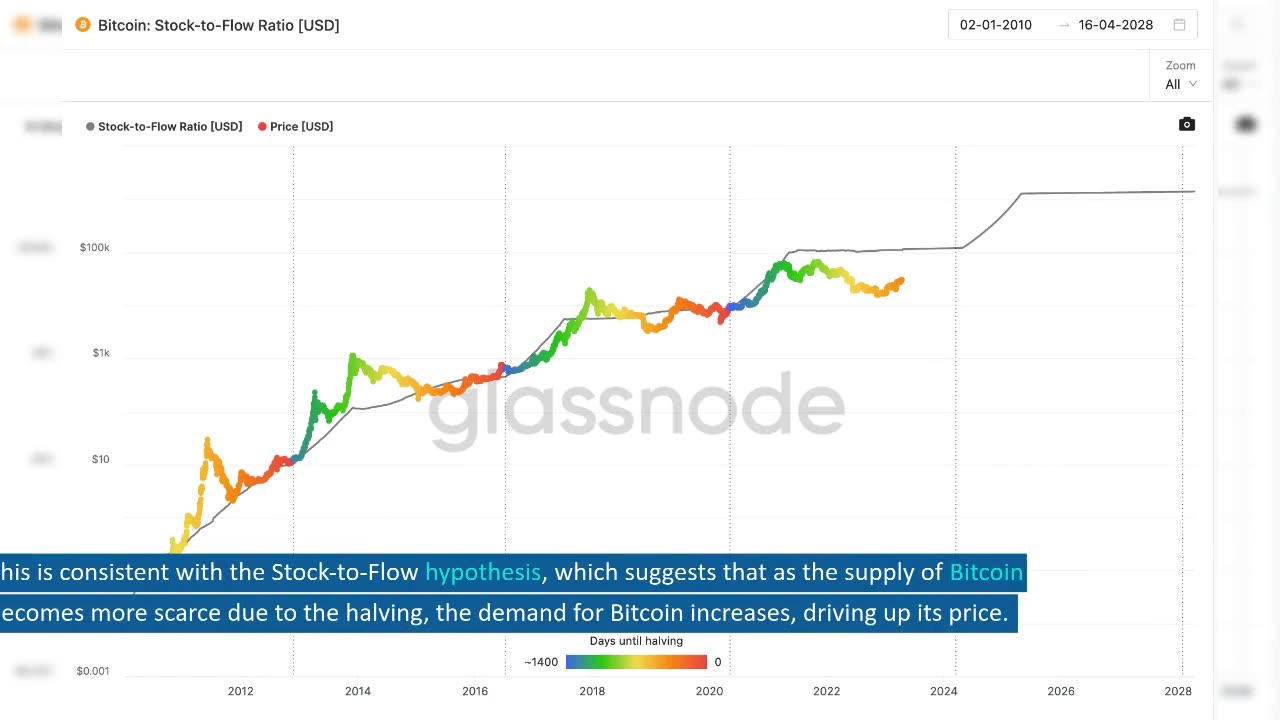Premium Only Content

The Stock to Flow Ratio - Is this a MASSIVE Bitcoin Loophole?
The Stock-to-Flow hypothesis is a theory that suggests scarcity is a significant driver of value. Specifically, the hypothesis argues that when the scarcity of an asset increases, its value should also increase. This hypothesis has been applied to Bitcoin, where it is argued that the Bitcoin halving cycle doubles the scarcity of the asset, leading to a corresponding increase in value.
Data shows that the value of Bitcoin has indeed increased during each halving cycle when the Stock-to-Flow ratio (S2F) has doubled. This is consistent with the Stock-to-Flow hypothesis, which suggests that as the supply of Bitcoin becomes more scarce due to the halving, the demand for Bitcoin increases, driving up its price.
However, if the value of Bitcoin were to decrease post halving, the Stock-to-Flow hypothesis would be rejected. This would suggest that scarcity is not the primary driver of value for Bitcoin, and that other factors such as market sentiment or speculation are more significant.
Interestingly, there is a profitable trading rule based on the Stock-to-Flow hypothesis. The rule suggests that investors should buy Bitcoin six months before each halving and sell 18 months after the halving. This trading rule has been shown to outperform a buy and hold strategy in terms of both risk and return.
Of course, this assumes that the correlation between the Stock-to-Flow ratio and Bitcoin value is not spurious, and that the Stock-to-Flow hypothesis holds true in the future. As with any investment strategy, there are risks involved, and investors should conduct their own research before making any investment decisions.
In conclusion, the Stock-to-Flow hypothesis suggests that scarcity is a significant driver of value for Bitcoin. Data shows that the value of Bitcoin has increased during each halving cycle when the Stock-to-Flow ratio has doubled. Additionally, there is a profitable trading rule based on the Stock-to-Flow hypothesis. However, as with any investment strategy, there are risks involved, and investors should conduct their own research before making any investment decisions.
-
 2:04:09
2:04:09
Nerdrotic
4 hours ago $16.05 earnedNew Peruvian Megalithic Site Discovery w/ Michael Collins | Forbidden Frontier #083
58.6K3 -
 LIVE
LIVE
Fresh and Fit
4 hours agoMyron TRIGGERED Rubi Rose Over This!
6,581 watching -
 LIVE
LIVE
TheSaf3Hav3n
3 hours ago $3.04 earnedCALL OF DUTY: BLACK OPS 6 | A QUIET PLACE: THE ROAD AHEAD | #RumbleTakeOver
911 watching -
 LIVE
LIVE
TheNateVibez
2 hours agoOmni-🤖 - First Rumble Stream.🫡 - VETERAN
1,318 watching -
 LIVE
LIVE
Tundra Gaming Live
7 hours ago $1.92 earnedThe Worlds Okayest War Thunder Stream//FORMER F-16 MAINTAINER//77th FS//#rumblefam
194 watching -
 2:32:19
2:32:19
DemolitionDx
3 hours agoSunday night COD with friends.
29.6K1 -
 2:10:14
2:10:14
vivafrei
13 hours agoEp. 237: More Trump Cabinet Picks! MAHA or Slap in the Face? Canada on Fire! Go Woke Go Broke & MORE
171K214 -
 2:23:21
2:23:21
SOLTEKGG
3 hours ago $2.80 earned🟢 First Day on RUMBLE!
30.2K3 -
 LIVE
LIVE
Vigilant News Network
7 hours agoCOVID-Vaccinated Hit With Grave New Reality | Media Blackout
2,206 watching -
 1:26:31
1:26:31
Josh Pate's College Football Show
7 hours ago $2.20 earnedSEC Disaster Saturday | Major CFP Earthquake Coming | Officiating Is A Disaster | New Studio Debut
21.4K1